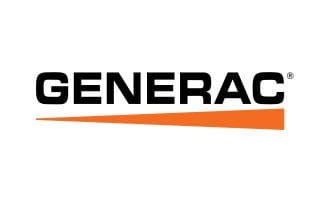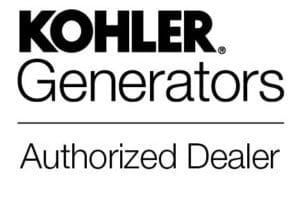SOLAR PANEL FAQ
FAQ
HOW SOLAR WORKS
Solar electricity works exactly the same as the electricity you buy from the utility company. You turn on lights, plug in lamps, and power appliances the same way you do right now. In fact, if you didn’t see solar modules on the roof, you’d never notice any difference, except a lower electric bill.
While the science of converting sunshine into electricity is complex, the idea is pretty simple. Solar electricity is generated by a group of solar modules called an array that’s installed on your roof or in your yard. When sunlight falls on the solar modules, a DC electrical current is created instantly. The DC electricity is fed into an inverter that changes it to standard AC electricity, the same kind your home already uses.
Yes, solar modules produce electricity on cloudy days, just less. As a rule of thumb, if there is enough sunlight to cast a shadow, then solar panels can produce electricity. Of course, in areas where there is abundant sunshine, like Phoenix or Carefree, a smaller solar electricity system will provide as much power as a larger system located in a place that receives less sunshine, like Maine or Washington.
Solar panels and solar battery systems are safe to use and do not produce any hazardous byproducts. All of the solar modules we install here at SouthFace Solar & Electric are UL 1703 certified and hold a Fire Rating of Class C. We also install all modules according to every industry safety standard.
As an Arizona licensed contractor, all systems we install will be inspected in accordance with all applicable N.E.C. codes by city or county inspectors along with an inspection by the utility company before being activated to ensure safety.
Solar panels need sunlight to operate, which means they do not generate electricity at night. However, in a grid-tied solar system, you will be able to draw power from the electric grid at night. You can also install a solar battery storage system and use stored solar energy to power your home or business at night.
Installing solar panels is one of the best ways to reduce your carbon footprint. Coal-fired electrical power plants are responsible for 72% of all sulfur dioxide emissions in the U.S. Meanwhile, solar electricity produces absolutely no pollution. One million homes going solar would result in a carbon dioxide emissions reduction of 4.3 million tons per year! That’s the equivalent of removing 850,000 cars from the road.
By using more solar electricity, fewer greenhouse gas-producing power plants need to be built, leading to fewer carbon emissions.
In the event of a blackout, all grid-tied solar energy systems are automatically shut down. This is a safety precaution that protects electrical workers and the grid itself.
If you have an off-grid solar panel system, your solar panels will continue operating during a power outage, sending power to your home, and excess power to your solar power battery if you have one, as long as there is enough sunlight available to do so.
Most residential solar energy systems are grid-tied, which means they maintain a connection to the electric grid. Off-grid solar systems are not connected to the grid.
In an Arizona off-grid solar home, you must produce all of the electricity you need on your own system — you will not have the grid to fall back on. This means that you will need multiple solar batteries and/or a backup whole-house generator for your home. Your solar batteries will store the excess electricity your solar panels produce during the day so that you can draw on that energy at night when your solar panels are not generating electricity.
Off-grid solar energy systems are more complicated and expensive to install than grid-tied systems, but they fully eliminate your reliance on the grid. This means you will never have to worry about demand charges from APS, deal with a power outage, or pay an electric bill again.
You can install a whole home generator if you have grid-tied solar panels and use it to power your home during an outage. However, it’s important to note that your solar panels will not be able to run your generator during an outage. All grid-tied solar panels are automatically shut down when the grid is down to help protect electrical workers and the grid itself. Instead, your generator will be powered by fossil fuels, like natural gas or propane. Find out if a solar battery or a generator is right for you.
SOLAR PANEL COST & SAVINGS
The cost of a solar energy system depends on a wide variety of factors, including your roof type, system complexity, mounting structure, system size, and more. The best way to find out how much it will cost to install solar panels at your home or business is to contact a trusted Arizona solar installer like SouthFace Solar & Electric for an estimate.
Solar modules are warranted to produce energy for 20-25 years. Over that time period, the cost of electricity from the utility continues to increase, while the solar system produces energy for free.
Yes, a solar electric system can increase a home’s value by up to $20,000 for every $1,000 in reduced annual operating costs. Many buyers are willing to pay a premium for a house with solar panels, and homes with solar panels often sell faster than homes without them.
SouthFace Solar & Electric makes it easy to get a quote for your solar installation. Click here to schedule a free solar consultation and estimate. Also, try out our solar calculator to see how much you can save by going solar.
Solar batteries prices vary depending on several factors, including the type and number of batteries you install. The best way to find out how much it will cost to install a solar battery in Arizona is to schedule a free consultation with SouthFace Solar & Electric. We will evaluate your needs, help you compare solar batteries, and provide you with an accurate estimate for your solar battery installation.
There are many financial benefits of solar battery storage. A solar battery allows you to store the excess electricity that your solar panels produce during the day and use it later at night when your panels are not generating electricity. This can also help you avoid demand response rates and allows you to use more of the electricity your solar panels produce, instead of buying electricity from the grid.
SOLAR PANEL INSTALLATION
It only takes 3-5 days for the average residential rooftop solar system to be installed. However, the entire solar installation process, from the initial site evaluation to the switch being turned on, takes about 10-15 weeks to complete.
Solar panels will not damage your roof as long as they are properly installed and your roof is in good condition. Here at SouthFace Solar & Electric, we take pride in the quality of our solar installations. All of our technicians are licensed and certified professionals who will make sure your roof is protected during installation, and we take extra precautions to avoid accidental damage.
Here at SouthFace Solar & Electric, we take pride in designing and installing solar systems that are sleek and streamlined. Your system’s clean and elegant appearance will blend beautifully with roof lines and will not detract from your home’s curb appeal. In fact, solar panels are likely to increase the value of your home.
If you need to have your roof repaired or replaced after your solar panels are installed, you will need to have your solar panels removed and reinstalled. It’s best to have a professional solar installer handle this process, rather than leave it in your roofer’s hands, to make sure the panels aren’t damaged during the removal process and are reinstalled correctly. We offer solar panel removal and replacement and can coordinate with your roofing company to make sure your panels are down for as little time as possible.
SOLAR PANEL MAINTENANCE
Solar panels do not require much maintenance. For the most part, you can just leave them be and enjoy the free electricity they produce. To ensure optimal performance, however, it’s best to have your solar panels cleaned occasionally. We also recommend an annual maintenance visit to check for underlying issues and make sure your system is working properly.
We recommend a yearly service check to keep your solar system in pristine condition and prolong the life of your inverter and modules. Getting on a regular solar panel maintenance schedule will help protect your investment and give you peace of mind. Looking for solar panel servicing near you? SouthFace Solar & Electric is here to help you care for your solar panels. Schedule maintenance for your solar panels today!
Occasionally, a solar array should be cleaned with distilled water to clear away dust and other grime, which may accumulate and block sunlight. You can clean your solar panels yourself using distilled water and a soft, non-abrasive cloth or sponge. You should not use soap, a pressure washer, or an abrasive sponge to clean your solar panels as these could cause damage. If you don’t feel comfortable cleaning your solar panels yourself (or you just don’t want to!) schedule solar panel cleaning with SouthFace Solar & Electric.
Because solar panels don’t need servicing very often, solar panel maintenance is not usually expensive. Solar panel maintenance costs per year can vary depending on what solar panel maintenance issues you run into, but maintenance for a properly installed system shouldn’t cost you more than a few hundred dollars a year.
SOLAR INCENTIVES
Please visit our solar incentives page to learn more about the solar rebates and incentives available for solar panels in Arizona.
Net metering is a solar incentive that allows you to share the energy your solar panels produce with the electric grid. You earn credits for the electricity you send to the grid, and you can use those credits to buy electricity from the grid when your panels are not producing enough.
Unfortunately, net metering in Arizona has been phased out for the vast majority of Arizona residents. SouthFace Solar & Electric can design a system that maximizes electricity production and storage along with current incentives to help you avoid buying electricity from the grid.
CHOOSING THE RIGHT SOLAR ENERGY PRODUCTS
There are many factors that affect your home’s solar potential and determine which type of solar energy system is right for you. Much of the decision is based on the amount of roof space you have, and which direction your home faces. South-facing roofs produce the highest annual output; however, east- and west-facing roofs can also harvest good results. It is important that your system not be shaded by trees, buildings, or other obstacles for long periods throughout the day.
At SouthFace Solar & Electric, we design custom solar systems to meet your electricity requirements and the specifications of your roof. The racking system will create a seamless appearance that integrates well on asphalt-shingle, flat-concrete tile, flat roof, and curved Spanish tile roofs.
There are many solar panels, batteries, inverters, and racking systems on the market, so choosing the right products for your needs can be overwhelming. This is why it’s so important to partner with an experienced solar energy company. An experienced and knowledgeable installer will know which products make the most sense for your needs and budget.
Here at SouthFace Solar & Electric, we design and build custom solar energy systems. Our team will answer your questions, educate you about all available options, and design a custom solar energy system that meets your needs.
The size of your solar panel system, or the number of panels you need, depends on the amount of electricity your household or business uses on a regular basis. During your free solar consultation, SouthFace Solar & Electric will evaluate your energy needs based on the past 12 months of your electric bills. This will give us a better understanding of your energy needs so that we can size your solar system correctly.
Sometimes, it makes more sense to install a smaller solar system that offsets a portion of your energy costs, and then expand the system down the road. We will help you make the best decision based on your needs and budget. You can also use our solar calculator to get an idea of what size system you will need.
It’s also important to note that the size of your solar energy system will be limited by the amount of roof space you have available. The more roof space you have, the more solar panels you can install.
UNDERSTANDING YOUR ELECTRIC BILL WITH SOLAR
If your solar panels are grid-tied, you will still receive a statement from your utility company every billing period, even if you do not owe any money. However, your bills will look a little different and it’s important to understand how to read your electric bill with solar.
At SouthFace Solar & Electric, we design custom solar systems to meet your electricity requirements and the specifications of your roof. The racking system will create a seamless appearance that integrates well on asphalt-shingle, flat-concrete tile, flat roof, and curved Spanish tile roofs.
More people use electricity at certain times of day, called peak hours, and utility companies like APS and SRP charge higher rates for electricity that’s used during these peak hours. This is called demand charging.
When you install solar panels, you can generate your own electricity and avoid buying from the grid during peak hours, reducing your electricity bills. However, peak demand hours are often at night, when your solar panels can not produce electricity. This is where solar battery storage comes in.
A solar battery will allow you to store the excess energy that your solar panels generate during the day when there is plenty of sunshine available. Then, you can draw on your stored energy during nighttime peak demand periods instead of buying from the grid.





